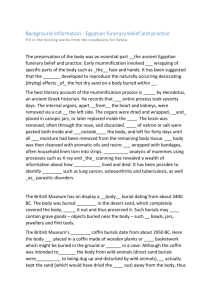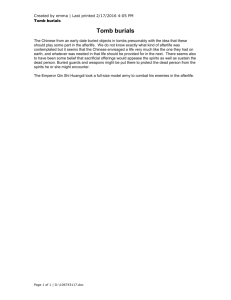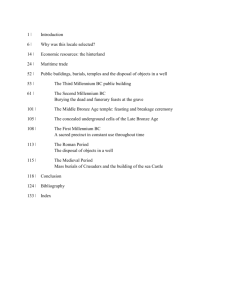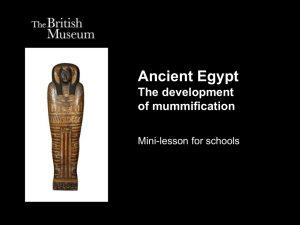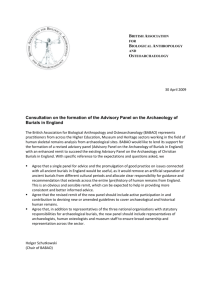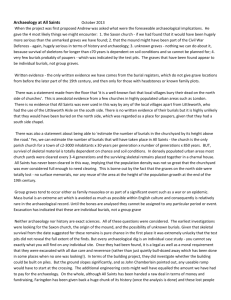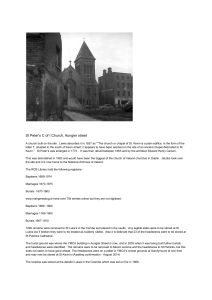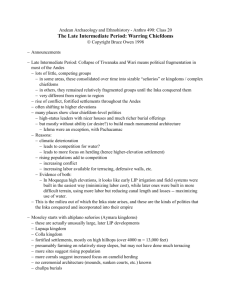File
advertisement
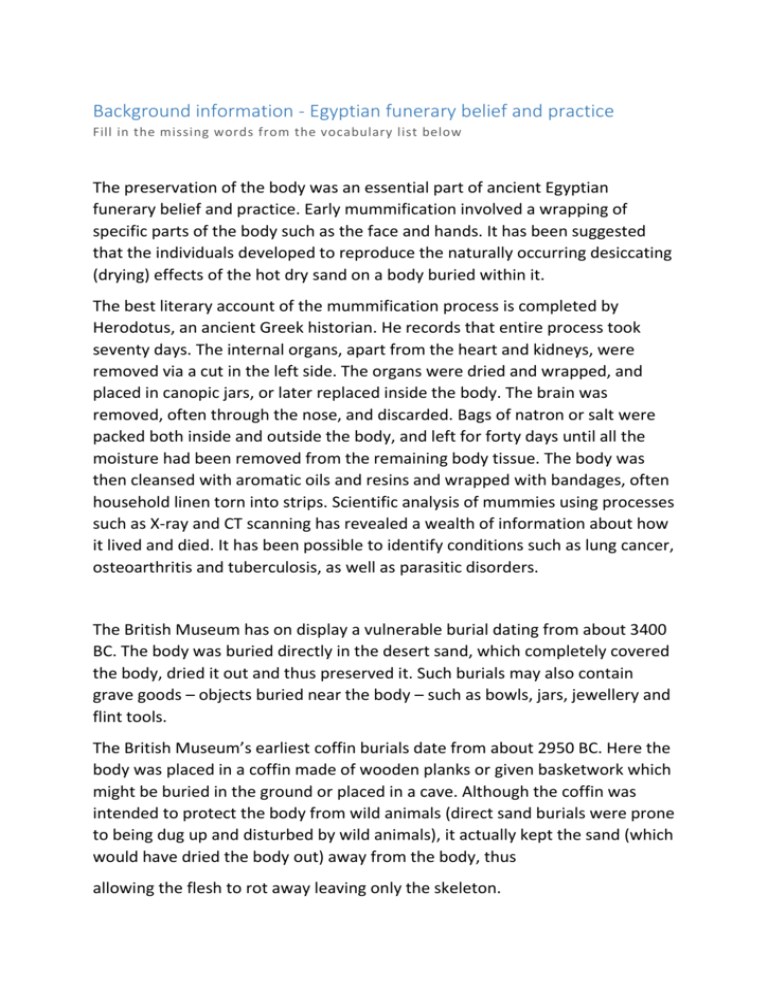
Background information - Egyptian funerary belief and practice Fill in the missing words from the vocabulary list below The preservation of the body was an essential part of ancient Egyptian funerary belief and practice. Early mummification involved a wrapping of specific parts of the body such as the face and hands. It has been suggested that the individuals developed to reproduce the naturally occurring desiccating (drying) effects of the hot dry sand on a body buried within it. The best literary account of the mummification process is completed by Herodotus, an ancient Greek historian. He records that entire process took seventy days. The internal organs, apart from the heart and kidneys, were removed via a cut in the left side. The organs were dried and wrapped, and placed in canopic jars, or later replaced inside the body. The brain was removed, often through the nose, and discarded. Bags of natron or salt were packed both inside and outside the body, and left for forty days until all the moisture had been removed from the remaining body tissue. The body was then cleansed with aromatic oils and resins and wrapped with bandages, often household linen torn into strips. Scientific analysis of mummies using processes such as X-ray and CT scanning has revealed a wealth of information about how it lived and died. It has been possible to identify conditions such as lung cancer, osteoarthritis and tuberculosis, as well as parasitic disorders. The British Museum has on display a vulnerable burial dating from about 3400 BC. The body was buried directly in the desert sand, which completely covered the body, dried it out and thus preserved it. Such burials may also contain grave goods – objects buried near the body – such as bowls, jars, jewellery and flint tools. The British Museum’s earliest coffin burials date from about 2950 BC. Here the body was placed in a coffin made of wooden planks or given basketwork which might be buried in the ground or placed in a cave. Although the coffin was intended to protect the body from wild animals (direct sand burials were prone to being dug up and disturbed by wild animals), it actually kept the sand (which would have dried the body out) away from the body, thus allowing the flesh to rot away leaving only the skeleton. The ancient Egyptians would have become aware of the problems associated with coffin burials through opening graves for subsequent burials as well as the accidental uncovering of sand burials. Increasing understanding of the process of natural preservation, coupled with the religious emphasis on the importance of the body in the afterlife, led to the development of full mummification which involved artificially drying the body before placing it in the coffin to ensure the complete preservation of the body. a also and x 2 as bags body x 3 burials complete conditions CT dried directly earliest from given in individuals it x 2 of x 2 outside placed process processes protect reed scientific the x 6 through to vulnerable was would
